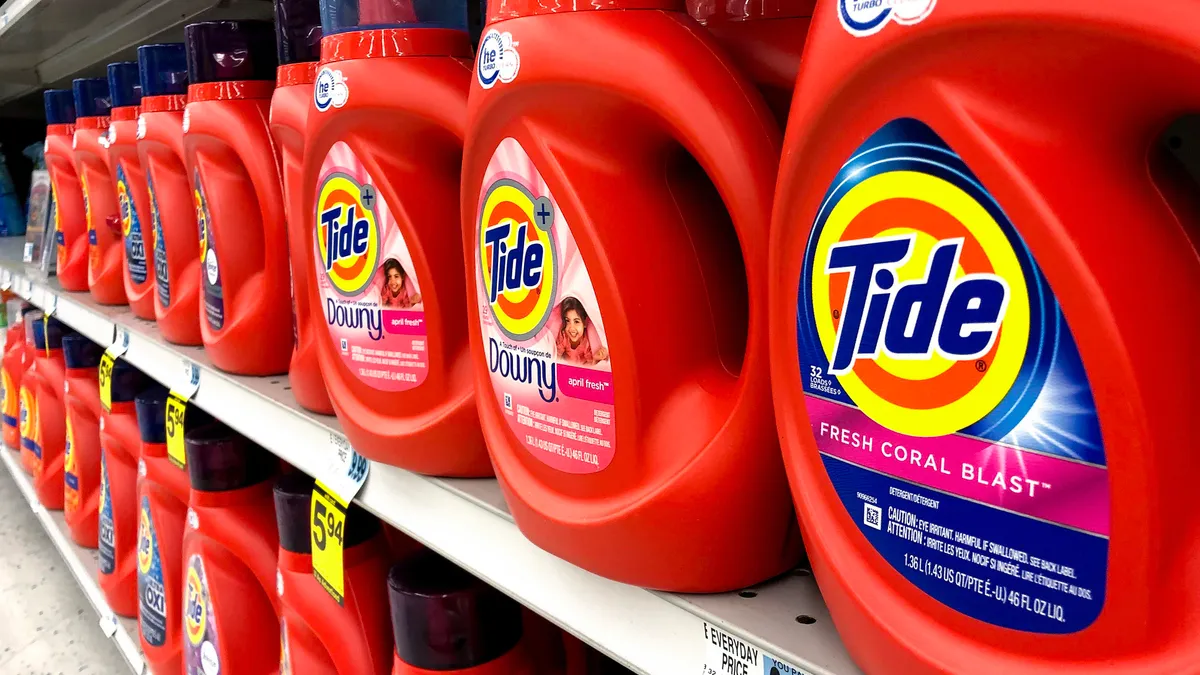Dive Brief:
- Procter & Gamble will rely on price increases and new productivity initiatives to offset higher costs of freight and commodities, CFO Andre Schulten said on an October earnings call.
- The CPG giant has worked to speed reformulation and add new suppliers as part of a plan to reduce costs, Schulten said. P&G also completed a second round of price increases, with many hikes going into effect in September and October.
- Productivity has returned to pre-COVID levels, Schulten added, which will allow P&G to further focus on cost-saving initiatives. “We are constantly looking at our end-to-end supply chain, including logistics, to drive costs out.”
Dive Insight:
P&G, which owns brands including Tide and Crest, has shifted into cost-cutting mode in the face of lower consumer demand and higher prices for raw materials and transportation. The company expects a $3.9 billion after tax headwind from commodities and logistics in fiscal year 2023.
“We will offset a portion of these cost headwinds with price increases and productivity savings,” said Schulten. “We will continue to invest in irresistible superiority.”
The CPG giant is working to optimize operations and procurement as part of its Supply Chain 3.0 initiative, which the company plans to unveil at an investors conference later this month. While details of Supply Chain 3.0 are scarce, enhancing automation and digital capabilities will likely play a large part.
P&G’s 2022 annual report noted that the business is heavily investing in enhancing its digital capabilities to reduce cost and speed up decision-making.
“Increased digitization of our manufacturing lines, more use of artificial intelligence and more use of blockchain technology are not ends unto themselves,” the report said. “They are tools we can use to delight consumers and customers.”
Product reformulations and price hikes have been a go-to move for P&G in fighting rising inflation. The company announced price hikes on oral and skin care last year in addition to increasing its reliance on alternate suppliers and reformulated products.
Other businesses have focused on transforming their supply chains to adjust to cooling demand following a pandemic-induced buying frenzy. McCormick, for example, announced a plan to cut $100 million in costs by reducing its reliance on copackers.














